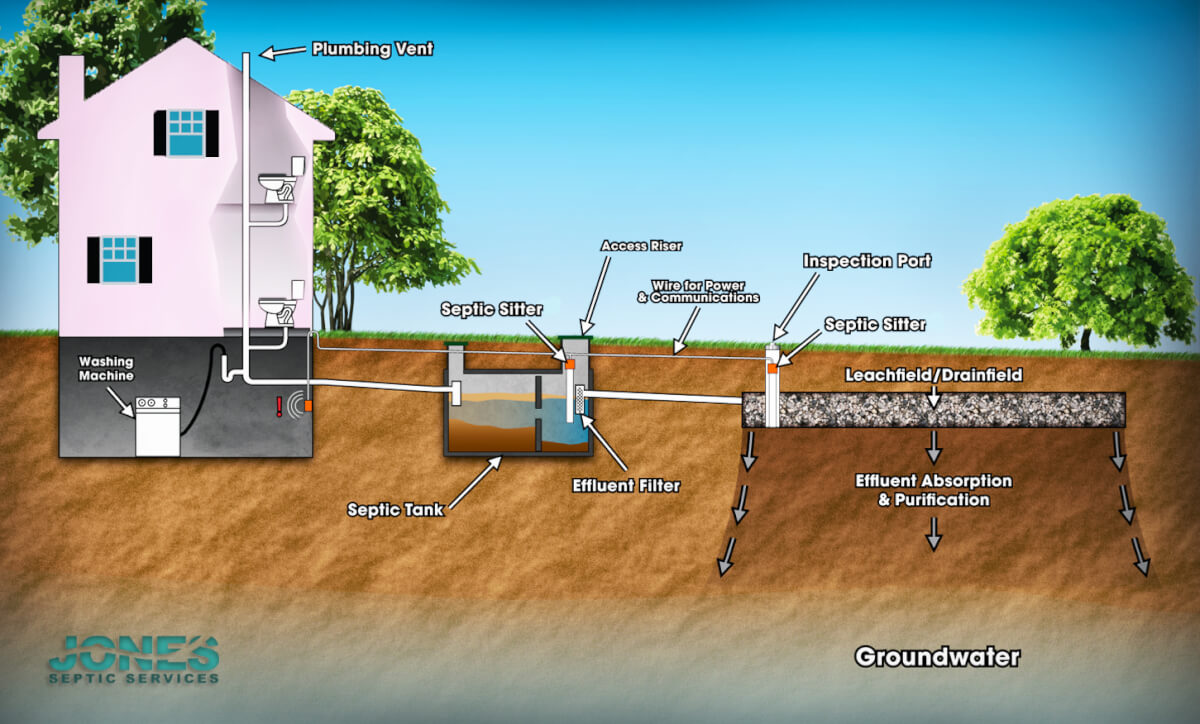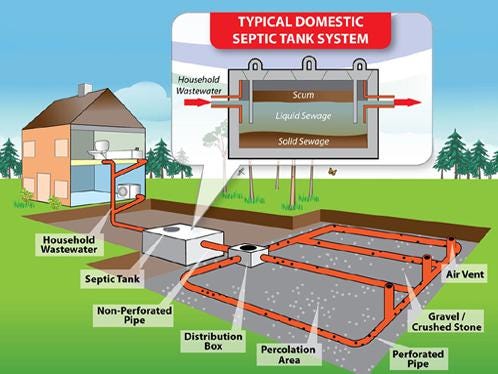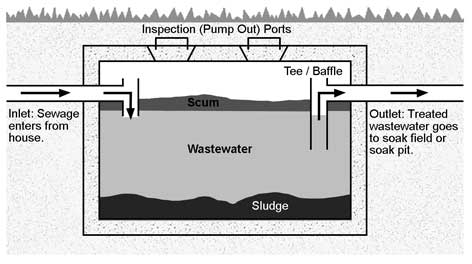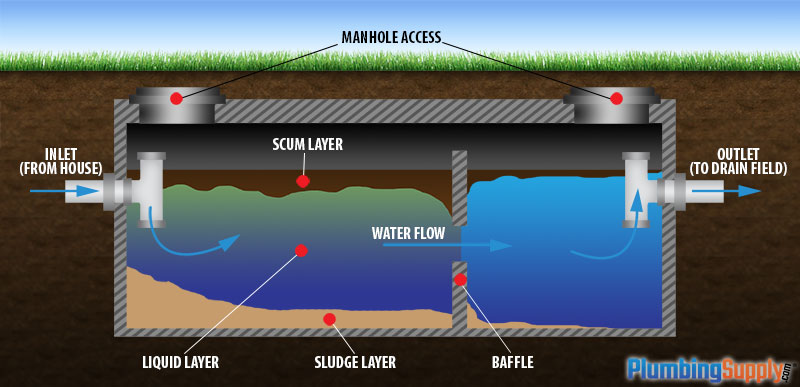- Get link
- X
- Other Apps
The septic tank is a buried water-tight container usually made of concrete fiberglass or polyethylene. How does a septic tank work.
 Healthy Septic Systems Minnesota Pollution Control Agency
Healthy Septic Systems Minnesota Pollution Control Agency
Preserving the usefulness of an existing drainfield extends its life.

How does a septic system work. Once the bio waste is collected in the septic tank it undergoes primary treatment as the waste is sorted into sludge wastewater and scum based on its density. Thanks gravity Grease and oil rise to the top aka the scum layer. They break down waste leaving water clean enough to safely percolate down into the earth.
All water runs out of your house from one main drainage pipe into a septic tank. This video is about How Does A Septic System Work About Press Copyright Contact us Creators Advertise Developers Terms Privacy Policy Safety How YouTube works Test new features 2021. It arrives at the septic tank where it sits and separates.
This water comes from all of the plumbing in your home not just your toilets it includes showers bathroom sinks kitchen sinks and washing machines. How does your septic system work. Here the biological breakdown continues in the soil by bacteria that needs air or oxygen.
System repairs can be upwards of 50000 depending on the work that needs to be done and whether or not there is a suitable location for a second drainfield. Septic systems are designed to treat wastewater usually underground. How does a septic system work.
It is an underground watertight container mostly rectangular or round made of fiberglass plastic or concrete. Your septic system works by combining nature with reliable technology. The septic tank holds the waste for primary treatment where solids and liquids are separated by gravity.
The rest of the septic system is where most of the work is performed to remove the bacteria viruses and other elements in the wastewater. There are two key parts that make up a septic system. Waste water leaves your home through a pipeline called the main line then enters the septic tank primary receiver.
Microbes that exist in the soil consume these bacteria and viruses resulting over time in clean water. This water is then filtered into the area around it where it is fully cleaned. It is in the septic tank where the separation of solid and liquid wastes present in wastewater happens.
Keeping a septic drain field clean unclogged and flowing freely is the single most crucial component to how a septic system works as an effective filtration system. In a typical onsite septic system Type 1 wastewater from sinks tubs showers and toilets flushes out of the house into a septic tank that separates and stores any solid particles that either settle to the bottom or float to the top in the first of two compartments. Sludge is the heaviest waste product as it is composed of organic solids so it collects at the very bottom of the tank.
The whole system is designed to keep bacteria healthy and busy. Gravity to move wastewater. Over time build-up in the drain field where the stone and sand meet is common but managed improperly will clog the natural flow of wastewater causing backups and ponding in the.
How does a Septic System Work. Septic systems are decentralized sewage-treatment systems that play an important role in keeping your home habitable and safeguarding local water quality. The main job of a septic tank is to clean dirty household water that comes from bathrooms laundry rooms and other areas of your home.
A septic system has a simple design. Wastewater goes into the tank where over time it settles naturally into three layers. In a nutshell a conventional septic system consists of a septic tank and a septic drainfield also known as a leach field or soil absorption field.
Septic tank systems work by using. By taking care of your septic system today you are decreasing your chances of needing an expensive repair in the future. Specifically this is how a typical conventional septic system works.
You flush something down a drain. Understand that a septic system is a cafeteria for bacteria Bacteria are what makes a septic system work. The heavy digested solids called sludge accumulate at the bottom of the tank.
In a septic system effluent liquid from that settled and separated sewage is discharged through perforated pipes into a designated portion of your property either into a leach field or a mound.
 Types Of Septic Systems Septic Systems Onsite Decentralized Systems Us Epa
Types Of Septic Systems Septic Systems Onsite Decentralized Systems Us Epa
 How Septic Tanks Work Poughkeepsie Ny Septic Tank Repairs Septic Services
How Septic Tanks Work Poughkeepsie Ny Septic Tank Repairs Septic Services
 How Septic Tanks Work And When To Empty Them By Waste Disposal Hub Waste Disposal Hub Medium
How Septic Tanks Work And When To Empty Them By Waste Disposal Hub Waste Disposal Hub Medium
 Care Of Septic Tanks And Sewerage Systems
Care Of Septic Tanks And Sewerage Systems
 How Does A Septic System Work Avoid Septic System Problems
How Does A Septic System Work Avoid Septic System Problems
 How Does A Septic Tank Work Septic Tank Systems Septic Tank Septic Tank Installation
How Does A Septic Tank Work Septic Tank Systems Septic Tank Septic Tank Installation
 Septic System Cost Guide And Resource For New Hampshire
Septic System Cost Guide And Resource For New Hampshire
 How Does A Septic Tank Work Owls Hall Environmental
How Does A Septic Tank Work Owls Hall Environmental
 Rules And Regulations For Septic Tanks In France Fosse Septique Beauchamp Estates
Rules And Regulations For Septic Tanks In France Fosse Septique Beauchamp Estates
 Septic Systems How They Work And How To Maintain Them This Old House
Septic Systems How They Work And How To Maintain Them This Old House
 How Does A Septic System Work 5 Things To Know Bob Vila
How Does A Septic System Work 5 Things To Know Bob Vila
 How Does A Septic System Work 5 Things To Know Bob Vila
How Does A Septic System Work 5 Things To Know Bob Vila

Comments
Post a Comment